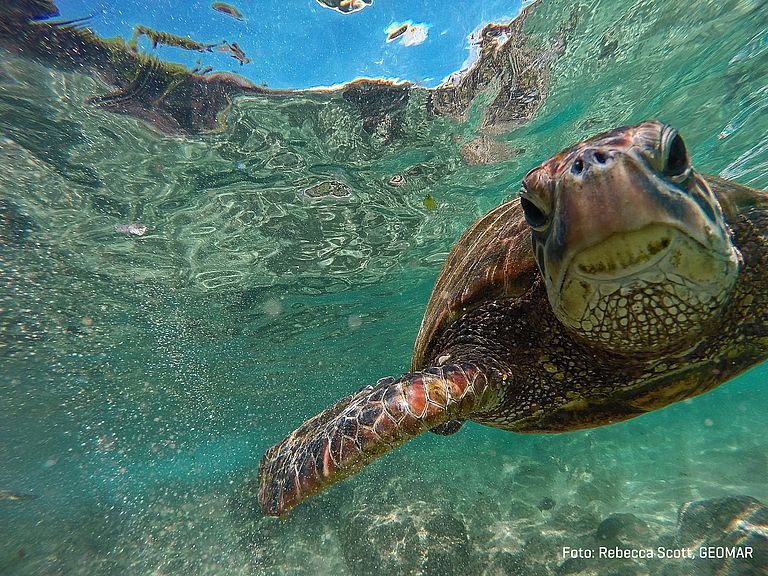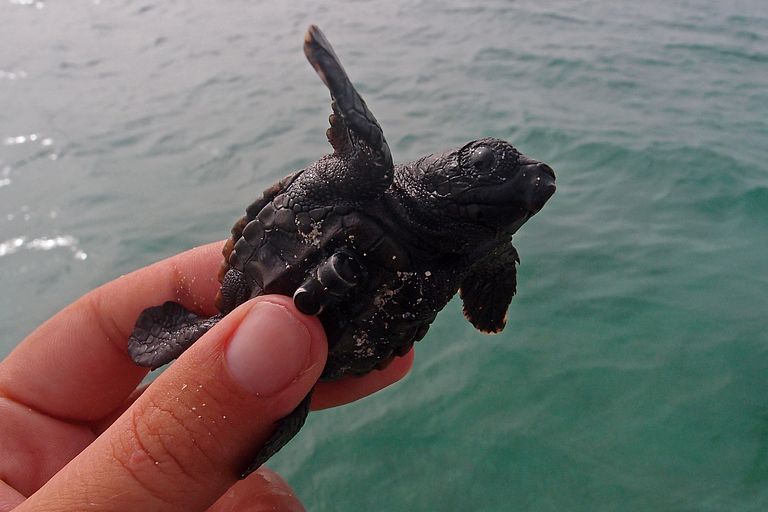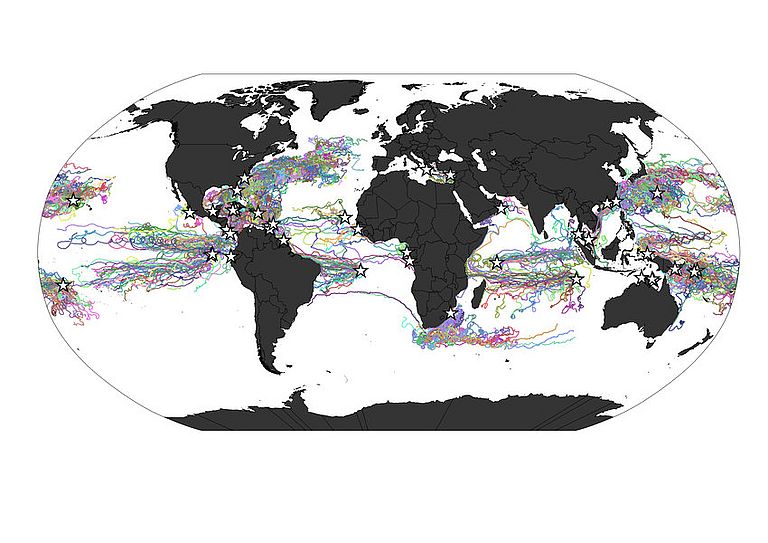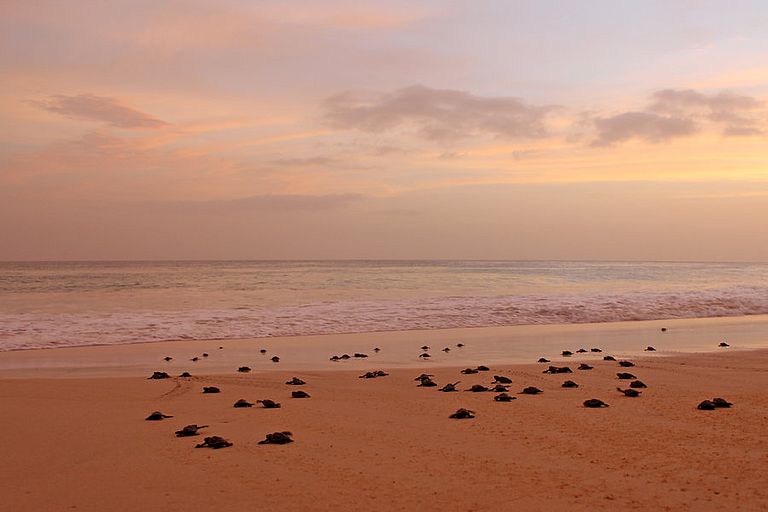Image of the month: February 2015
Long-distance swimmers with a sense of home
Sea turtles are true long-distance swimmers. They are able to conquer thousands of kilometres between the coasts, where they find their food, and the beaches where they reproduce. An international team of scientists, led by Dr. Rebecca Scott from GEOMAR Helmholtz Centre for Ocean Research Kiel and Dr. Christophe Eizaguirre from the School of Biological and Chemical Sciences at Queen Mary University of London has found out how ocean currents determine the migrations of the loggerhead turtle (Caretta caretta) from the Cape Verde islands.
Using nano-sized acoustic transmitters and swimming tests, the biologists learned that the newly hatched animals leave the beach with a swimming sprint and take advantage of favourable ocean currents to escape predator-rich coastal areas. After this, they spend several years feeding and growing in the safer open ocean.
Genetic studies revealed that most females very precisely return to the island where they once were born for breeding. The fact that males are somewhat less sedentary, prevents inbreeding and long-term genetic defects. However, there seems to be a limit in the selection of feeding grounds. Adult turtles seem to return to coastal feeding grounds they drifted to with ocean currents as newly hatched juveniles. But if the breeding and coastal feeding grounds are further away from each other than 3000 kilometres, most adult turtles cannot cope with the distance. “The energy they gain during feeding is simply not sufficient for the full breeding trip”, Dr. Rebecca Scott explains. “If the distance is too large, the adult turtles look for food in the immediate vicinity of their breeding grounds or directly in the open sea.”
The migration behaviour of the turtles is thus different from other species. For example, some whales and some birds follow their mothers or more experienced fellows on their travels and show social learning. For other birds and some insects migration patterns are innate.
Links:
Sea turtles’ first days of life: A sprint and a ride towards safety - Scientists follow hatchlings from Cape Verde with tiny acoustic transmitters
Going Home - GEOMAR scientists found evidence why female loggerhead sea turtles always return to their place of birth
Observing platform sea turtle - A new interdisciplinary research project






